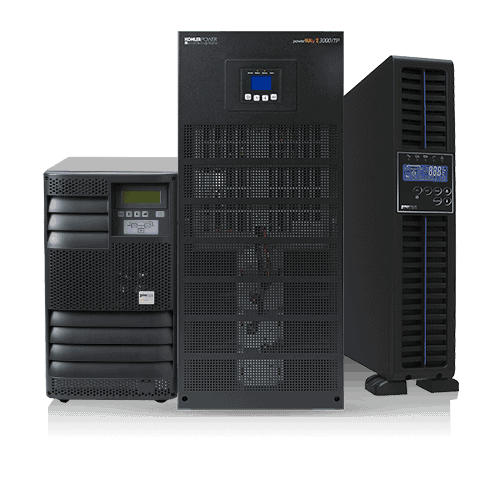The UPS’s role is to protect its critical load from spikes and other mains-borne aberrations during normal operation, and also to provide battery back-up if the mains fails.
However, the UPS’s role must extend further – to communicating with its critical load, and any associated generator. With communications, the UPS can warn the load if it detects a mains failure; the load can then use the battery autonomy to shut down gracefully. Alternatively, the same autonomy period can be used by a generator to start up and synchronise with the UPS, so power to the load continues without interruption.
Without communications, the load would see the UPS supply fail without warning if the battery autonomy expires, and would crash with usually disastrous consequences. Similarly, the generator would be denied the time it needs to start up.
So, a simple warning of an extended power failure is essential – but UPSs can also benefit from more sophisticated communications, as we discuss below.
Accordingly, UPSs have built-in communications capabilities, but these vary according to the complexity and demands of the load. The simplest approach is to provide a set of volt-free contacts, which supply true/not true signals relating to mains failure, battery low, or other alarm conditions. Network software available for almost all variants of Windows, Mac, Linux and Unix operating systems can respond to these contacts and organise an orderly system shutdown as required.
If more detailed or sophisticated information is required, the next step is to use RS-232 serial communications. RS-232 data can include analogue values such as the inverter and bypass outputs’ voltage, frequency, current and kVA/KW power, as well as the battery’s voltage, charge and discharge currents and remaining battery time. Statistics relating to mains failures and UPS operation can also be transmitted.
Today, however, UPS systems can be components supporting large, complex networks, which may be distributed over many sites across a wide geographical area. Additionally, some of the remote sites may be unstaffed, or not have a network manager available. This situation calls for a Wide Area Network (WAN) solution, in which UPSs are connected into the network, and become visible and addressable like other network devices. Even smaller computer server arrays will benefit from this approach of bringing the UPSs online.
In either case, Simple Network Management Protocol (SNMP) provides a solution, because it allows a network manager to monitor and control all connected devices from a single central location. SNMP is a standard protocol, and part of the Transmission Control Protocol/Internet Protocol (TCP/IP) suite which allows all network devices to transmit management variables across enterprise-wide networks, even encompassing multiple and dispersed locations. SNMP allows compatibility with major network management systems such as HP OpenView and IBM Tivoli NetView.
A UPS given intelligence with SNMP capability can log events, continuously monitor power quality, report on battery status, load and temperature, and perform self-diagnostics. Additionally, it can warn all its protected devices of an extended power failure, allowing them to shut down gracefully.
Intelligent UPSs also allow great granularity of control; for example, they can turn individual devices on or off. This allows isolation of system sections for security reasons, shut down devices to save energy, and manage redundant portions of the system.
Networking also allows monitoring from a remote supervisory point, possibly managed by a third party such as the UPS vendor who is offering a maintenance and emergency response service. Alarms could be initiated over the network, or by SMS or mobile phone, and a service engineer alerted to carry out basic diagnostics remotely. Regular maintenance requirements can also be signalled automatically, while trends and latent issues can be spotted and rectified before they can cause failures.




